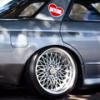Remove Those Bubbles In Your R32 Dash
Announcements
-
Similar Content
-
Latest Posts
-
And we are full
-
By soviet_merlin · Posted
Oooh, you mean the people sending knockoff products aren't even trying anymore. I thought you meant companies 🤦♂️ -
I really dig that skid plate / undertray. Looks like the bumper has a little bit of overhang, so this will be very handy I reckon.
-






Recommended Posts
Create an account or sign in to comment
You need to be a member in order to leave a comment
Create an account
Sign up for a new account in our community. It's easy!
Register a new accountSign in
Already have an account? Sign in here.
Sign In Now